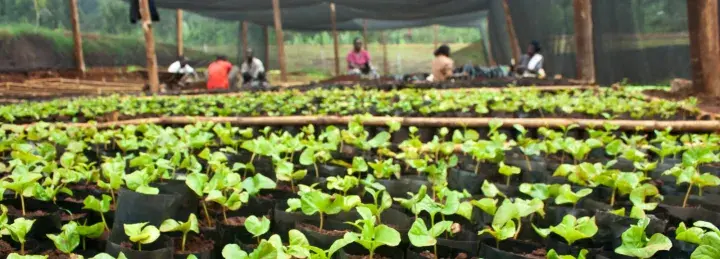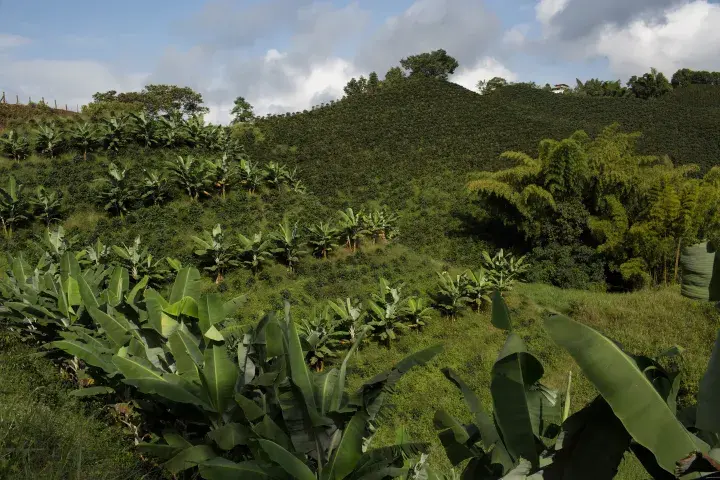Improving incomes of producers and their families is a priority for many sustainability systems and their partners - and to do that, reliable methods for measuring and monitoring communities' income changes and living standards are essential.
Over the last few years, initiatives like the Living Income Community of Practice (LICoP) have made significant strides in this area, producing guidance and toolkits to support income measurement for individual smallholders and discrete supply chains.
But what if we want to look at resource flows on a larger scale? Increasingly, sustainability systems are involved in collaborative efforts that seek to have an impact at the scale of whole landscapes or jurisdictions. Measuring incomes for individual farmers is one thing, but how can we capture reliable data and understand trends across diverse and complex producer regions, some of which are geographically larger than whole countries?
This is a subject ISEAL has been exploring with sustainability consultant Heartwood LLC, and we've recently published a primer to help organisations get started. It discusses in depth three key, and interconnected, ways to model income data - through landscape-level indicators, income profiles, and household surveys. We give a brief outline of each below but urge readers to explore the primer in full:
Landscape indicators
Gathering data on a high-level set of indicators can be a useful way to monitor landscape-scale changes. In this regard, three indicators are particularly relevant. Reliance on the informal economy is correlated with poverty, low productivity, unemployment and slow economic growth, and is particularly prevalent in agriculture - in many countries, particularly in Africa, more than 90% of agricultural workers are employed informally. Reliance on remittances - which comprise 22-50% of GDP for the top receiving countries - suggests households are struggling to achieve a decent standard of living. Another useful measure is economic opportunity - in general, areas with less economic diversity tend to be poorer and offer fewer income-earning opportunities.
The benefit of using macro-indicators is that international bodies like the World Bank already use these and similar to measure economic progress at the national level, so data for the landscape or jurisdiction may already be available. We must flag that this data doesn't provide the kind of detail needed to attribute the identified changes to any specific intervention, however, though they are broad, they can tell an important story of economic development and income security within landscapes.
Income profiles
Building on the three landscape-level indicators above, income profiles can provide additional snapshot of information about the determinants of how a landscape's stakeholder groups receive their income.
Income profiles start with identifying who is in the landscape, recognising that some groups - like undocumented migrant workers - may be more hidden than others. Income profiles can be developed through research, interviews and focus groups, and important aspects to cover in studies include:
- Inequality - what are the risks, barriers, and opportunities for the different groups within the landscape and wider society?
- Income modalities - how do the groups typically receive their income - for example is it through formal or informal work, in-kind payments, productive assets or savings?
- Resilience - how do the groups react to or adapt to adversity, such as seasonal fluctuations in production, periodic hazards such as droughts, or chronic systemic challenges such as climate risks?
- Legislation - how are groups (operating in the formal economy) affected by labour laws, minimum wages, and other regulations?
Used in combination with landscape-level indicators, income profiles make it possible to monitor, in finer resolution, relative changes to income for different groups alongside landscape-scale economic change.
Individual household data
In some cases, more detailed analysis of incomes at the household level will be needed. This is particularly important if landscape practitioners or investors want to monitor and make claims about how specific interventions contribute to landscape-level change, or to compare individual household incomes against benchmarks or modelled scenarios.
From a landscape perspective, it's important to select a representative sample of households from each of the income profiles identified above and then carry out primary data collection. Methods for collecting individual household income data include structured surveys, semi-structured interviews, open-ended dialogues and participatory methodologies, or a combination of these. The approach will depend on the landscape, priority research questions and what the data is being used for.
Measuring incomes across landscapes is a complex challenge, but an important one. Along with more detailed guidance on the three approaches profiled above, the primer includes a number of templates and tools to help.



